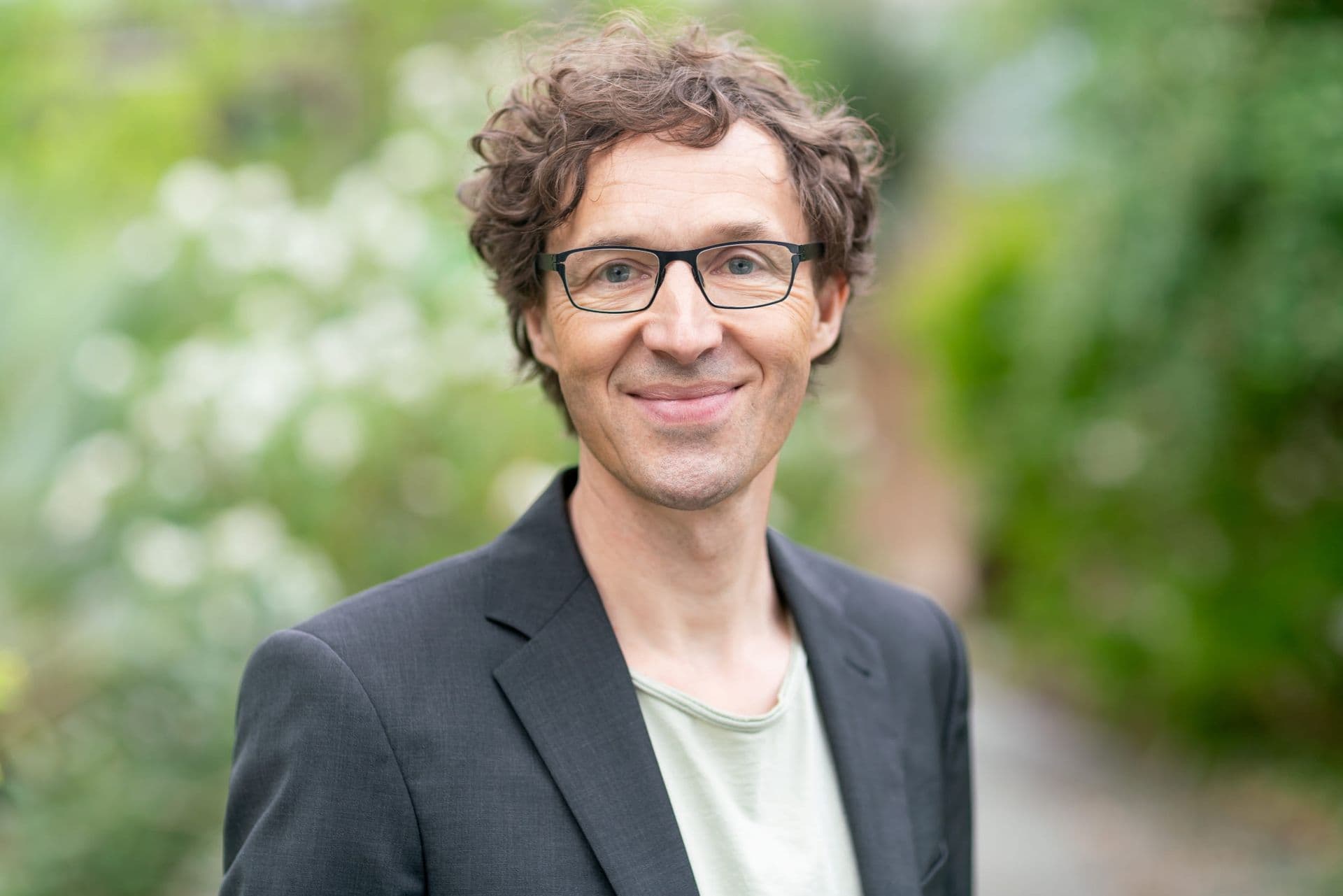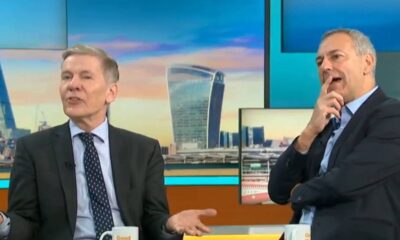Lifestyle
Exploring Joseph Beuys’ Legacy Through Art and Society

In a world grappling with climate change, social divisions, and digital overload, the ideas of artist Joseph Beuys continue to inspire reflection on individual roles in shaping society. German theorist and aesthetician, Prof. Dr. Timo Skrandies from the University of Heinrich Heine in Düsseldorf, will delve into this topic during a lecture titled “Expanded Concept of Art (Joseph Beuys): Artistic Practice and Social Sculpture.” The event takes place today, March 15, 2024, at 12:00 at the Faculty of Fine Arts in Cetinje and at 18:30 at the European House in Bar.
Skrandies, a leading scholar on Beuys’ life and work, will discuss art as a medium for transformation, empathy, and collective action. He emphasizes these themes as crucial for understanding contemporary existence, particularly in what he describes as the “critical zone” of today’s society. This lecture is part of a program organized by the Faculty of Fine Arts to commemorate the exhibition “I Want to See My Mountains,” named after Beuys’ ambient installation, in collaboration with the Federal Republic of Germany Embassy in Montenegro and the Institute for Foreign Relations.
In an interview with Pobjeda, Skrandies elaborated on Beuys’ enduring legacy in the modern world, addressing the transformative power of art and the boundaries between life and myth. He believes that every individual holds the creative potential to effect societal change.
Skrandies remarked, “Joseph Beuys passed away in 1986. That was before the reunification of Germany and the end of the global divide between East and West. Today, social circumstances, such as right-wing populism, and international relations characterized by deglobalization and new power blocs are changing once again. Therefore, Beuys cannot be relevant in all aspects today, as his art and life belong to a ‘different time.’ However, there are at least two reasons for his continued presence.”
The first reason, according to Skrandies, is Beuys’ role as an artistic and aesthetic inspiration for many contemporary artists, including Marina Abramović and Anselm Kiefer. He notes that these artists have engaged with, adapted, and critically examined Beuys’ ideas. The second reason is Beuys’ focus on political issues that remain pertinent today, such as ecological crises, Europe’s future, and concepts of equality and democracy.
Reflecting on Beuys’ famous assertion that “everyone is an artist,” Skrandies interprets this statement as both provocative and sincere. He explains that this notion encourages individuals to view human action as an inherently creative process, fostering social connections and collective societal shaping based on creativity. Beuys’ use of the terms “art” and “artist” encompasses a universal creative capacity possessed by all people, rather than just those trained in traditional artistic practices.
Skrandies’ research also explores “art in the Anthropocene” and “aesthetics of the critical zone.” He connects Beuys’ work to contemporary ecological and philosophical discussions, noting that Beuys was among the first artists to address ecological crises, a topic that gained widespread attention in the early 1970s with the Club of Rome’s report “Limits to Growth.” While Beuys felt a strong connection to the natural world, he maintained a clear distinction between nature and culture. Modern theories emphasize the interdependence of human and non-human actors, a perspective that highlights the complex relationships and long-term effects of our actions.
Critics often argue that Beuys blurred the lines between art and life, myth and history. Skrandies acknowledges this complexity, suggesting that it challenges the conventional separations upheld by Enlightenment traditions and modern scientific disciplines. He cites French philosopher Bruno Latour, who argues that we may never have been as “modern” as we believed, as various forms of existence on this planet are intertwined and influence one another.
Beuys’ performances frequently employed materials such as felt, fat, and honey—elements imbued with symbolic significance. Skrandies posits that “transformation” is a key concept in understanding these materials, as they represent energetic processes. Beuys assigned anthropological, social, or even political meanings to these materials, highlighting aspects of communication, social coldness, and emotional rhythms. The healing and vulnerability that these materials evoke stem from Beuys’ artistic intuition and ability to convey deeper meanings through tactile experiences.
In light of contemporary political and ethical engagement through art, Skrandies asserts that Beuys’ concept of social sculpture offers a meaningful framework for examining these issues in the 21st century. He states, “Social sculpture describes how our thoughts, feelings, and actions are in constant transformation and connection. We are all part of and create social sculpture at every moment. This shows that we cannot simply shift the responsibility for what occurs in our communities and on our planet onto others. We live in a shared space of resonance, and thus, we all bear responsibility for what becomes of our coexistence.”
As he prepares for his lectures, Skrandies hopes the audience in Montenegro will grasp the importance of avoiding the “greatest misunderstanding” surrounding Beuys’ work. He believes that engaging in dialogue will help them understand life in the critical zone and shape it in a way that allows everyone to live and thrive.
Skrandies recognizes that Beuys’ artistic legacy is often misunderstood, both publicly and academically. His work is a complex system encompassing his personality, life story, and all his creations—from the smallest drawings to monumental installations. He encourages continued discussion about Beuys’ art and its content to prevent the misconception that his work is complete or finished.
-

 Health3 months ago
Health3 months agoNeurologist Warns Excessive Use of Supplements Can Harm Brain
-

 Health4 months ago
Health4 months agoFiona Phillips’ Husband Shares Heartfelt Update on Her Alzheimer’s Journey
-

 Science2 months ago
Science2 months agoBrian Cox Addresses Claims of Alien Probe in 3I/ATLAS Discovery
-

 Science2 months ago
Science2 months agoNASA Investigates Unusual Comet 3I/ATLAS; New Findings Emerge
-

 Science2 months ago
Science2 months agoScientists Examine 3I/ATLAS: Alien Artifact or Cosmic Oddity?
-

 Entertainment2 months ago
Entertainment2 months agoLewis Cope Addresses Accusations of Dance Training Advantage
-

 Entertainment5 months ago
Entertainment5 months agoKerry Katona Discusses Future Baby Plans and Brian McFadden’s Wedding
-

 Science2 months ago
Science2 months agoNASA Investigates Speedy Object 3I/ATLAS, Sparking Speculation
-

 Entertainment5 months ago
Entertainment5 months agoEmmerdale Faces Tension as Dylan and April’s Lives Hang in the Balance
-

 Entertainment2 days ago
Entertainment2 days agoAndrew Pierce Confirms Departure from ITV’s Good Morning Britain
-

 World3 months ago
World3 months agoCole Palmer’s Cryptic Message to Kobbie Mainoo Following Loan Talks
-

 World4 weeks ago
World4 weeks agoBailey and Rebecca Announce Heartbreaking Split After MAFS Reunion









